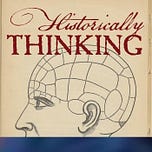Originally published on December 16, 2020 (Episode 190)
Introduction
In 1709, one of the great European technological achievements of the 18th century was realized: the reverse engineering of porcelain, a formula that the Chinese had perfected and guarded for nearly two millennia.
That this breakthrough occurred in Saxony, in the heart of central Europe, meant that porcelain would assume a special place not only in technology, business, and industry, but also in the political economy of the German states. Porcelain became a key to understanding Europe’s relationship to an ever-globalizing capitalist world.
With me to discuss this fascinating history is Suzanne L. Marchand. Her book Porcelain: A History from the Heart of Europe uncovers how the reinvention of this “white gold” shaped economies, cultures, and global connections.
About the Guest
Suzanne L. Marchand is Boyd Professor of History at Louisiana State University. She specializes in European intellectual history and the history of the humanities in modern Europe.
For Further Investigation
Suzanne L. Marchand, Porcelain: A History from the Heart of Europe (Princeton University Press, 2020)
Samuel Wittwer, The Gallery of Meissen Animals: Augustus the Strong’s Menagerie for the Japanese Palace in Dresden
Stacey Pierson, Collecting Chinese Ceramics: The History of the Sir Percival David Collection
Robert Finlay, The Pilgrim Art: Cultures of Porcelain in World History
The Porzellansammlung (Porcelain Collection) at the Zwinger Palace, Dresden
Listen & Discuss
Why do objects like porcelain hold such power to shape economies and cultures? Share your reflections in the comments, and pass this episode along to a friend who treasures art and history.











